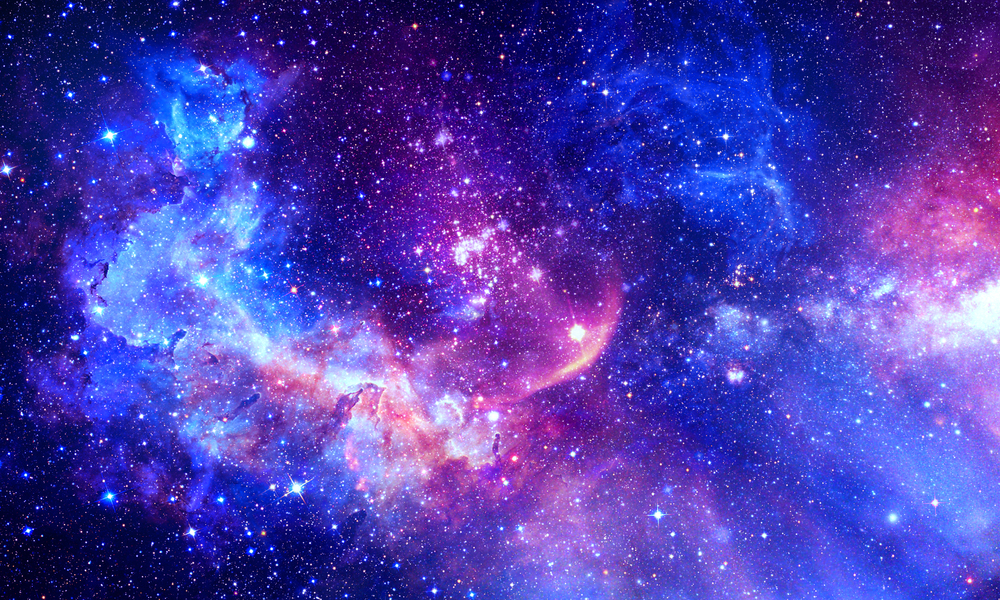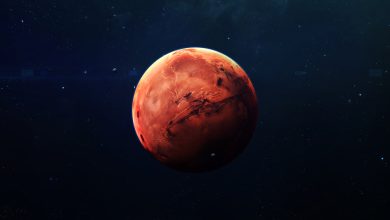Unveiling the Wonders: 10 Facts to Feed Your Curiosity

In a world as vast and mysterious as ours, the twin flames of wonder and curiosity have long been the driving forces behind humanity’s quest for knowledge. Wonder, that initial awe and amazement at the universe’s complexities and mysteries, beckons us to question, to seek, and to understand.
It leads us down paths untraveled, through the pages of unturned books, and into the depths of uncharted territories. Curiosity, on the other hand, is the relentless pursuit of answers, a thirst for knowledge that is never quite quenched.
This insatiable curiosity has carved the path for our advancements and discoveries, pushing us to uncover the truths hidden within the fabric of everything from the micro to the macro cosmos.
The importance of learning new, intriguing facts cannot be overstressed; it not only enriches our understanding of the world around us but also challenges our perceptions, promotes critical thinking, and fosters a continuous sense of wonder.
In the spirit of this endless pursuit, we’ve curated a collection of 10 captivating facts that promise to feed your curiosity and perhaps even ignite your own quest for knowledge.
From the enigmatic depths of the Mariana Trench to the boundless reaches of the observable universe, each fact is a testament to the wonders that await those willing to look closer. Join us as we unveil these marvels, reminding ourselves that the world is still full of mysteries waiting to be solved.
Fact 1: The Deepest Part of the Ocean
Plunging to the very depths of the Earth’s oceans, the Mariana Trench is a marvel that epitomizes the planet’s hidden mysteries. This trench, reaching a staggering depth of more than 36,000 feet below sea level, is not just the deepest point of the world’s oceans but also a realm teeming with life forms that defy our understanding of survival.
The intense pressure, pitch darkness, and cold temperatures of this underwater canyon have not deterred life; instead, they have given rise to some of the most unique creatures known to science. Among these are the snailfish, which thrives at depths that would crush other marine life, and the bioluminescent organisms that light up the ocean’s abyss with their ethereal glow.
The Mariana Trench is a testament to the resilience of life and stands as a vivid reminder of the ocean’s vast unexplored territories, challenging us to reconsider what we know about the planet’s biodiversity.
Fact 2: The Speed of Light
Venturing beyond the depths of the oceans to the expanses of the cosmos, our next fact brings to light the unparalleled speed at which light itself travels. Racing through the vacuum of space at an astonishing speed of approximately 299,792 kilometers per second, the speed of light is not merely a fascinating figure but a fundamental constant of the universe that anchors many of the laws of physics as we know them.
This cosmic speed limit sets the stage for understanding everything from the basic principles of relativity to the complex mechanisms that govern the universe.
The significance of light’s speed extends beyond its sheer magnitude; it allows us to look back in time as we observe distant stars and galaxies, their light reaching us after traversing the vastness of space for millions, even billions, of years.
Thus, the speed of light serves as a universal ruler, a beacon that guides us in unraveling the universe’s most profound mysteries, reminding us that light is not just what illuminates our world but also what connects us to the cosmos at large.
Fact 3: The Human Brain’s Capacity
Delving into the intricacies of the human mind, Fact 3 unveils the remarkable storage capacity of the human brain, a topic that continues to fascinate scientists and laypeople alike. With an estimated ability to hold approximately 2.5 petabytes (or a million gigabytes) of information, the human brain rivets us with its sheer capacity for knowledge and memory.
This comparison becomes even more astonishing when we juxtapose the brain’s capabilities with modern technology; the most advanced hard drives or cloud storage systems still fall short of the brain’s natural ability to store, process, and retrieve information seamlessly.
Unlike digital storage that occupies physical space and consumes energy, the brain’s storage system is incredibly efficient, continuously adapting and reorganizing memories without need for external upgrades.
This astounding capacity of the human brain not only underscores the limitations of current technology but also inspires further research into artificial intelligence and machine learning, aiming to mimic the brain’s efficiency and adaptability.
Fact 4: The Age of the Earth
The age of our planet, Earth, is a topic that has long intrigued scientists and scholars alike. Through modern scientific techniques, it has been established that the Earth is approximately 4.54 billion years old.
This estimate is derived from dating the oldest rocks and minerals found on Earth, as well as meteorites that have fallen to the ground. Radiometric dating, particularly the use of uranium-lead dating, plays a crucial role in measuring the Earth’s age.
By analyzing the decay of radioactive isotopes within these ancient materials, scientists are able to backtrack and determine their age, and by extension, the age of the Earth itself.
Among the oldest materials found on Earth are zircon crystals from the Jack Hills of Western Australia, dating back to about 4.4 billion years, providing a tangible connection to the planet’s earliest days.
These ancient zircons offer invaluable insights into the Earth’s formation and early environment, serving as windows into the distant past of our planet.
Fact 5: The Amount of Stars in the Galaxy
Gazing up at the night sky, the stars we see are but a fraction of what exists within our Milky Way Galaxy. Astronomers estimate that the Milky Way is home to around 100 to 400 billion stars, each with its own system of planets, revealing the immense scale and diversity of our galaxy.
However, this staggering number pales in comparison when we consider the concept of the observable universe, which expands our horizon far beyond the Milky Way to encompass all of the galaxies and stars that we can potentially observe from Earth.
The observable universe is estimated to contain about two trillion galaxies, each brimming with millions, billions, or even trillions of stars.
This mind-boggling expanse highlights not just the vastness of the universe but also the limited scope of our current observational technologies.
The sheer number of stars within our galaxy, and indeed the universe, is a humbling reminder of our place within the cosmic tapestry and underscores the ongoing quest for understanding in astronomy.
Fact 6: The Tiniest Mammal
In the remarkable tapestry of life that adorns our planet, the title of the tiniest mammal is claimed by the Etruscan shrew. This minuscule creature weighs a mere 1.8 grams, which is roughly the weight of a paperclip, and measures about 1.5 inches in length, making it an exquisite example of nature’s knack for miniaturization.
Despite its diminutive size, the Etruscan shrew leads a life as dynamic and filled with vigor as any of its larger mammalian counterparts. It possesses an incredibly fast metabolism, necessitating almost constant feeding on insects to sustain its energy levels.
Furthermore, its heart beats at a staggering rate of up to 1,500 times per minute, a number that is hard to comprehend when contrasted with the human heart rate.
The Etruscan shrew’s existence is not only a testament to the diversity and adaptability of mammalian life but also serves as a fascinating subject for scientists studying the physiological limits of life forms on Earth.
Its unique characteristics challenge our understanding of biology, offering insights into how creatures can thrive in the most unexpected ways.
Fact 7: The Largest Living Organism
When we contemplate the largest living organisms on Earth, our minds might initially drift towards the majestic blue whales or the towering sequoias.
However, the title intriguingly belongs to a less conspicuous contender: a massive aspen grove named Pando.
Situated in the Fishlake National Forest in Utah, USA, Pando is not just a collection of individual trees but a single organism connected by an extensive root system.
Spanning over 106 acres and weighing approximately 6,600 tons, this clonal colony comprises about 47,000 genetically identical quaking aspen trees. Pando challenges traditional notions of what constitutes an individual organism, illustrating the incredible complexity and diversity of life forms on our planet.
Its existence prompts scientists and laypeople alike to reconsider the definitions of organismal identity and uniqueness, filtering into broader discussions on biodiversity, conservation, and the interconnectedness of life on Earth.
Fact 8: Quantum Entanglement
Quantum entanglement, a term that might sound like science fiction to the uninitiated, is a peculiar and fascinating phenomenon observed in the quantum world.
At its core, it describes the intricate way in which particles such as electrons, photons, or even entire atoms can become so deeply connected that the state of one (no matter the distance separating them) instantaneously influences the state of the other. This “spooky action at a distance,” as Einstein famously dubbed it, challenges our classical notions of space and time.
The implications of quantum entanglement reach far beyond the mere theoretical; they hold the potential to revolutionize our world through the development of quantum computing and secure communication systems.
These technologies leverage the entanglement principle to perform operations at speeds unachievable by today’s standards and to create encryption that could be virtually unbreakable.
As researchers continue to unravel the mysteries of quantum entanglement, we stand on the cusp of a new era in physics and technology, where the once-impossible becomes the foundation of future innovations.
Fact 9: The Power of Placebos
The power of placebos stands as one of the most intriguing phenomena in medical science, shedding light on the intricate connection between the mind and body.
The placebo effect occurs when individuals experience genuine changes in their health after receiving a treatment that has no therapeutic benefit, solely based on their belief in the treatment’s efficacy.
This phenomenon underscores the significance of perception in health outcomes and becomes a vital tool in medical research, helping to distinguish the effects of new treatments from patients’ psychological responses.
Examples of the placebo effect in action are widespread, ranging from the reduction of pain and alleviation of symptoms in conditions like depression and Parkinson’s disease, to improved physical performance simply because individuals believed they were taking performance-enhancing substances.
The placebo effect’s profound implications highlight the complexity of human health, emphasizing that healing can stem not only from medical interventions but from the power of belief itself.
Fact 10: The Existence of Exoplanets
The discovery and study of exoplanets, planets orbiting stars outside our own solar system, have unraveled new chapters in our understanding of the universe. These celestial bodies, hidden in the vast expanse of space, range from gas giants larger than Jupiter to rocky planets that may harbor conditions conducive to life as we know it.
The quest to discover new exoplanets involves sophisticated techniques, primarily the Transit Method, where scientists observe slight dimmings of a star’s light as a planet crosses in front of it, and the Radial Velocity Method, which detects small wobbles in a star’s movement caused by the gravitational pull of orbiting planets.
These methodologies have not only confirmed the existence of thousands of exoplanets but also propelled our search for the cosmic Holy Grail – an Earth-like planet within a star’s habitable zone, where conditions might be right for life to exist.
Conclusion
In this captivating exploration, “Unveiling the Wonders: 10 Facts to Feed Your Curiosity,” we’ve ventured through a diverse landscape of facts, each one opening a door to the vast, intricate, and often awe-inspiring mysteries of our world and beyond.
From the rapid heartbeat of the tiny Etruscan shrew to the colossal spread of Pando, the interconnected aspen grove, our journey has taken us from the quantum entanglements of the microscopic realm to the boundless frontiers of exoplanetary space.
We’ve seen how the power of placebos can blur the lines between mind and matter and pondered the existence of life beyond our earthly confines.
As we conclude this expedition of curiosity, it’s evident that the universe we inhabit is far more complex and intertwined than we might have imagined. Each fact, each story, is but a thread in the vast tapestry of knowledge that remains largely unexplored.
Hence, this is not an end but an invitation—an invitation to view the world with wide-eyed wonder, to question the familiar, and to plunge into the depths of the unknown with unbridled curiosity.
May the wonders we’ve uncovered inspire you to continue the exploration, for in the pursuit of knowledge, every answer unfolds into a hundred new questions, and every discovery propels us further into the marvels of the cosmos.




